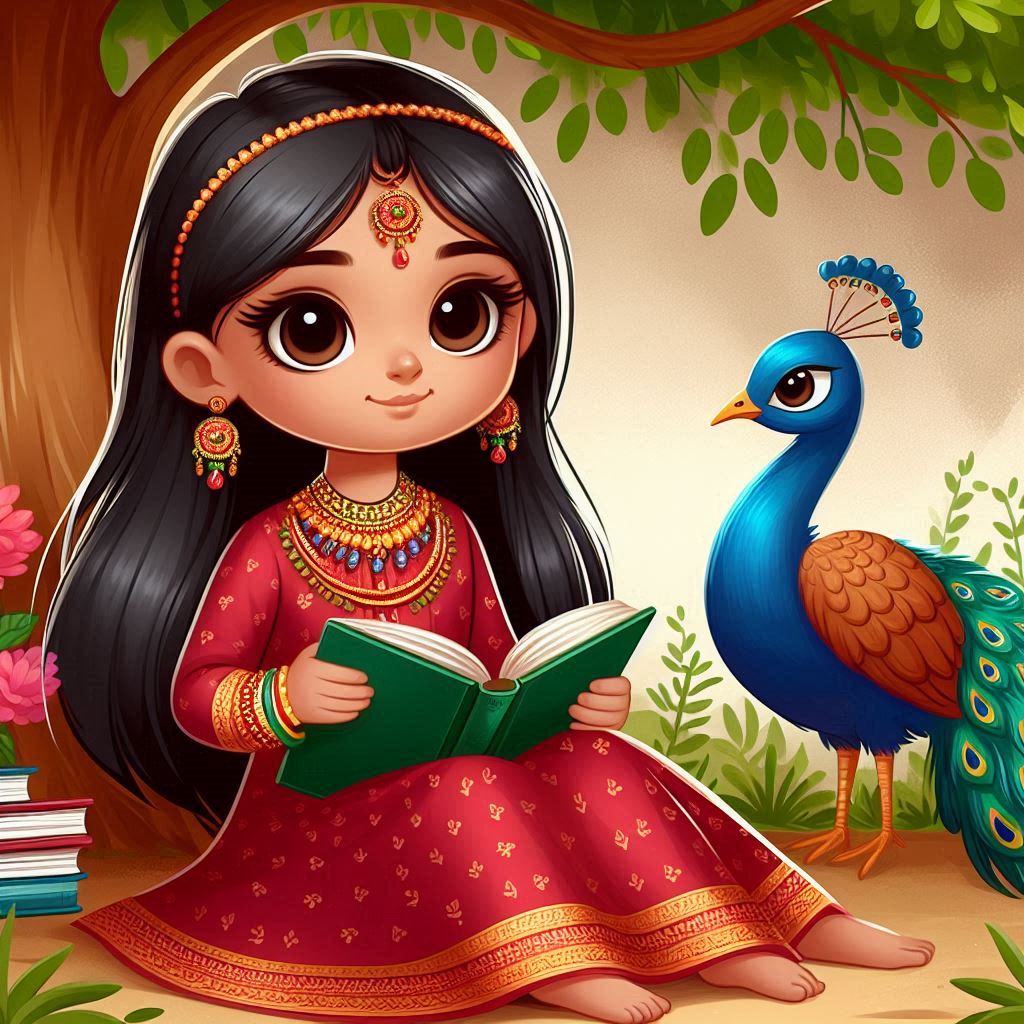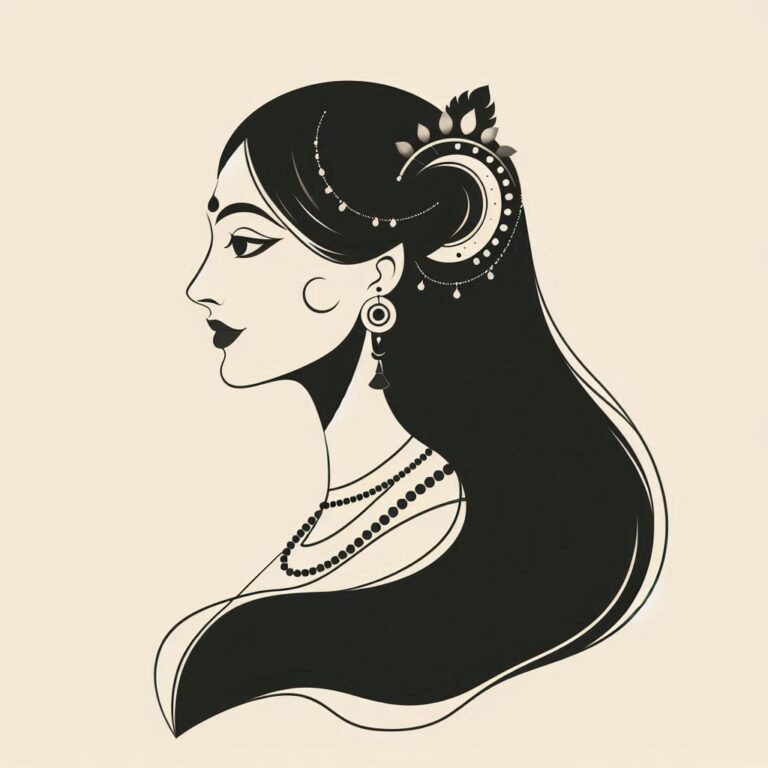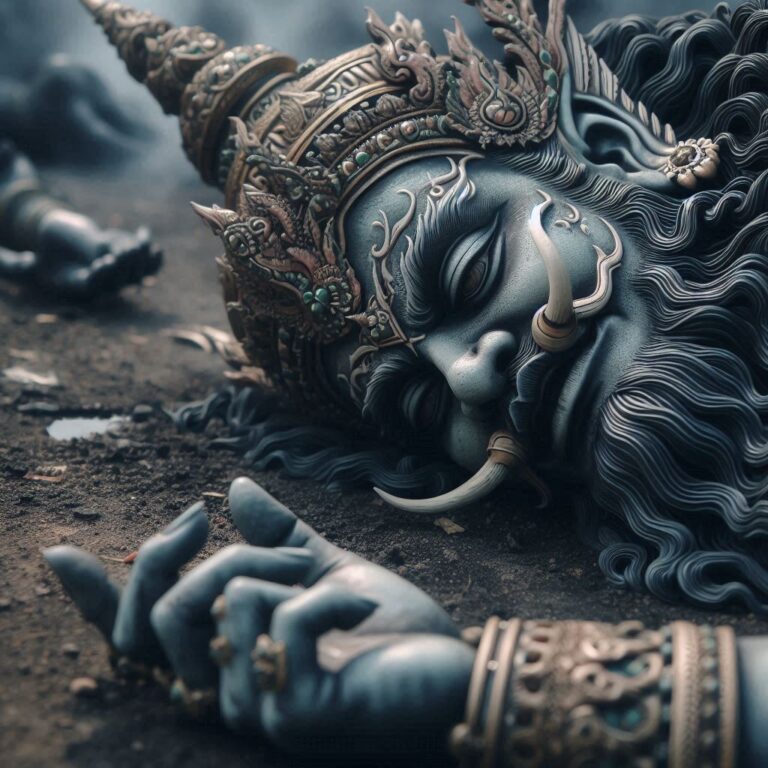The Divine Birth of Sita
Sita, the revered heroine of the Ramayan, is much more than just a character in an epic; she is the embodiment of virtue, purity, and devotion. In Hindu tradition, Sita is revered as the ideal woman, embodying the perfect wife, daughter, and mother. Her story begins with a miraculous and divine birth, setting the stage for the epic tale of love, sacrifice, and righteousness.

The Mystery of Sita’s Birth
The Legend of King Janaka
The story of Sita’s birth is steeped in divine mystery and symbolism. King Janaka, the ruler of Mithila, was known for his wisdom, piety, and devotion. Despite his virtues, King Janaka and his wife, Queen Sunaina, were childless and longed for a progeny to continue their lineage. According to legend, King Janaka, in his pursuit of an heir, turned to spiritual practices and divine intervention.
The Sacred Ploughing
The divine event of Sita’s birth occurred during a sacred ritual of ploughing the fields. King Janaka, as part of a yajna (sacred ritual), was ploughing a field when his plough struck a golden casket buried deep within the earth. To his astonishment, the casket contained a beautiful baby girl. Janaka, overwhelmed by this divine occurrence, accepted the child as a divine gift from the Earth (Bhumi).
Sita’s Birth as a Divine Event
Sita’s emergence from the earth symbolizes her divine connection with Bhumi, the Earth goddess. In Hindu mythology, Sita is often regarded as an incarnation of the Earth goddess herself, sent to earth to fulfill a greater cosmic purpose. Her birth is seen as a manifestation of the Earth’s blessings upon humanity, and she is revered as the daughter of the Earth.
Sita’s Childhood and Upbringing
Life in the Royal Palace of Mithila
Raised in the royal palace of Mithila, Sita was nurtured with love and care by King Janaka and Queen Sunaina. She grew up in an environment filled with wisdom, spirituality, and royal decorum. Sita’s upbringing was not just about learning the duties of a princess but also about understanding the deeper spiritual values that would guide her throughout her life.
Sita’s Devotion and Virtue
From a young age, Sita exhibited a deep sense of devotion and virtue. She was known for her piety, kindness, and strong moral character. Her spiritual education included learning the Vedas, performing daily rituals, and developing a profound connection with the divine. Sita’s devotion to righteousness and dharma (moral duty) was evident in every aspect of her life.
The Symbolism of Sita’s Birth
Sita as the Daughter of the Earth
Sita’s connection with the earth is not just symbolic; it is integral to her identity. As the daughter of the Earth, Sita represents fertility, nurturing, and the sustenance of life. Her birth from the earth underscores her role as a protector of nature and a symbol of the natural world’s inherent purity and goodness.
Sita as a Symbol of Feminine Power
In addition to her nurturing qualities, Sita is also a symbol of feminine power and resilience. Her strength lies not in physical might but in her unwavering commitment to truth, righteousness, and devotion. Sita’s life is a testament to the power of inner strength, moral courage, and the ability to endure hardships with grace and dignity.
The Role of Sita in Hindu Tradition
Sita’s influence extends beyond the Ramayan; she is a central figure in Hindu tradition and culture. As the ideal woman, Sita’s virtues are celebrated in various rituals, festivals, and religious practices. She is often invoked in prayers and hymns as a symbol of purity, loyalty, and devotion, and her story continues to inspire millions of devotees.
Sita’s Connection with Lord Rama
The Divine Union
The marriage of Sita and Rama is a pivotal event in the Ramayan and is seen as the union of two divine souls destined to uphold dharma. Their marriage was not just a royal alliance but a cosmic event, symbolizing the union of virtues represented by Rama and Sita. Their relationship is often held as the epitome of marital harmony and mutual respect.
Sita as the Ideal Wife
Sita’s role as Rama’s consort is marked by her unwavering loyalty, dedication, and support. Despite the many challenges she faced, including exile and separation from Rama, Sita remained steadfast in her love and duty towards her husband. She is celebrated as the ideal wife, whose life exemplifies the virtues of patience, sacrifice, and devotion.
The Challenges Faced Together
The trials and tribulations faced by Sita and Rama are central to the narrative of the Ramayan. From the challenges of exile in the forest to the abduction by Ravana and the subsequent agnipariksha (trial by fire), Sita’s endurance and strength are highlighted throughout the epic. Her story is one of overcoming adversity with dignity and grace, reinforcing her status as a revered figure in Hindu tradition.
The Importance of Sita in the Ramayan
Sita’s Role in the Epic
Sita’s role in the Ramayan is not just that of a passive character but a driving force in the story’s development. Her actions and decisions influence the course of events, and her presence adds depth to the narrative. Sita’s character provides a balance to Rama’s, offering a perspective that highlights the human emotions and moral dilemmas faced by both.
Sita’s Trials
One of the most significant aspects of Sita’s life is the series of trials she endures. The agnipariksha, where Sita proves her purity by walking through fire, is a powerful moment in the Ramayan. This trial is not just a test of Sita’s chastity but a profound statement on her unwavering integrity and moral strength. Sita’s trials serve as a reminder of the resilience and fortitude required to uphold dharma in the face of adversity.
Conclusion
Sita’s Legacy in Hindu Culture
The legacy of Sita is enduring and continues to influence Hindu culture and spirituality. She is revered not just as the wife of Rama but as a goddess in her own right, embodying the ideals of womanhood, devotion, and moral strength. Sita’s story is celebrated in countless retellings, rituals, and festivals, making her one of the most beloved and respected figures in Hindu tradition. Her life serves as an example of how one can maintain purity, strength, and grace even in the most challenging circumstances.
Reflection on Sita’s Birth and Life
The divine birth of Sita from the earth is more than just a miraculous event; it is a profound symbol of her connection with nature, her purity, and her role as a nurturer. Her life is a reflection of the eternal values of dharma, compassion, and resilience. Sita’s journey, from her birth to her trials and ultimate ascension, offers timeless lessons on the power of inner strength, the importance of unwavering faith, and the enduring impact of virtuous living.
FAQs
What is the significance of Sita’s birth from the earth?
Sita’s birth from the earth symbolizes her divine connection with nature and the Earth goddess, Bhumi. It represents purity, fertility, and the nurturing aspect of the earth. Sita’s emergence from the earth underscores her role as a protector of nature and a symbol of the natural world’s inherent goodness.
How did Sita’s upbringing influence her role in the Ramayan?
Sita’s upbringing in the royal palace of Mithila, under the guidance of King Janaka and Queen Sunaina, instilled in her the values of righteousness, devotion, and moral strength. Her spiritual education and the environment of wisdom and piety in which she was raised played a crucial role in shaping her character, preparing her for the trials she would face in the Ramayan.
Why is Sita considered an incarnation of the Earth goddess?
Sita is considered an incarnation of the Earth goddess, Bhumi, because of her divine birth from the earth and her close association with nature. In Hindu mythology, Sita’s connection with the earth represents the nurturing, sustaining, and protective qualities of the Earth goddess. Her life and trials symbolize the resilience and strength of nature itself.
What are the key lessons from Sita’s life?
Sita’s life teaches us the importance of inner strength, unwavering faith, and the power of virtue. Her devotion to her husband, her endurance in the face of adversity, and her adherence to dharma, even in the most challenging circumstances, are powerful lessons on living a life of righteousness, compassion, and moral integrity.
How is Sita’s legacy celebrated in Hindu tradition?
Sita’s legacy is celebrated in various ways across Hindu tradition. She is worshiped as a goddess in many temples, and her story is recounted in festivals like Ram Navami and Diwali. The Ramayan, which narrates her life and trials, is a central text in Hindu culture, and Sita’s virtues are extolled in countless prayers, hymns, and devotional songs.






